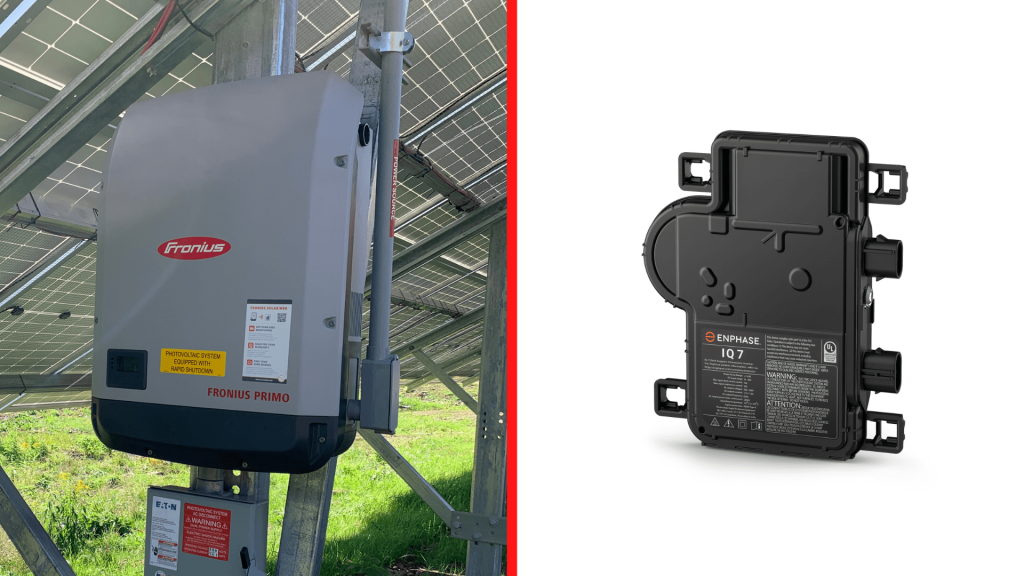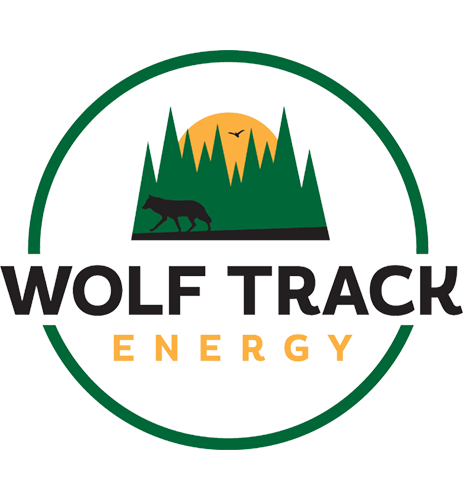Microinverters vs. optimizers: What makes for the best solar system?

If you’ve studied solar energy systems in any detail, you probably have a good idea what an inverter does. But how do those devices compare with microinverters? And what about microinverters vs. optimizers?
In this blog, we’ll talk about the maybe the second-most important component in a solar energy system: inverters. We’ll also talk about the different kinds of inverters that are out there, and their advantages and disadvantages.
Back to basics
First, we’ll need to go back to the basics of electricity.
There are two important terms to remember: voltage and current. Think of voltage like the pressure forcing water through a pipe, and current is the actual amount of water flowing through a pipe.
(To throw in another electrical term, high-voltage systems are dangerous because there’s enough “pressure” to overcome the resistance in your body and cause electrocution!)
There are two types of electricity: direct current and alternating current. In direct current systems, electrical current flows in one direction. This is probably most commonly found in batteries.
With alternating current, however, electrical current moves back and forth in rapid fashion – 60 times per second in the U.S. This is the kind of electricity you find in your outlets.
Why is this important? When sunlight strikes a solar panel, it produces direct current electricity. But since most of the devices in your home run on AC, you’ll need something to turn DC into AC before it reaches your home’s electrical panel.
That’s where the inverter comes in.
What is an inverter?
An inverter does exactly that – it inverts the electrical signal coming from the solar panels, converting it into AC electricity that you’ll be able to use in your home.
Electricians can use testing equipment that allows them to visualize the electrical signal they’re monitoring. A typical DC signal will be a flat line, since it’s staying at a consistent positive voltage at all times.
But remember that AC current is moving back and forth constantly, so it will alternate between a positive voltage and negative voltage constantly. An AC signal will look like a series of hills and valleys.

Here, you can see why we call it an inverter. We’re “inverting” the DC signal to from negative to positive and back again.
Types of inverters
Inverters found in a solar system fall into two major categories: string and micro.
String inverters are the traditional kind of device that installers have used for years. It converts the electricity produced by a group, or string, of solar panels. Think of it as a kind of centralized setup.
Microinverters, meanwhile, perform that process at each panel. That means if your system has 12 panels, you have 12 microinverters, with one connected to each panel.
Compare and contrast
String inverters are less expensive than microinverters. But they can be more susceptible to shade losses. Like stepping on a garden hose, shade on one panel in a traditional string inverter system can noticeably reduce overall output.

Because microinverters convert DC to AC at each panel, they’re better able to avoid those kinds of shade losses. And you’ll be able to monitor each panel’s performance and better identify any issues in your system.
Microinverters vs. optimizers
But string inverters can be paired with another device called an optimizer. This device doesn’t convert DC to AC like a microinverter, but they monitor each panel’s “maximum power point” and address issues stemming from shade and other factors that can affect performance.
From Solar Power World: “Power optimizers can correct for module “mismatch” by allowing each module to function at its maximum power point (MPP) and then converting the energy to the optimal voltage and current for the array. This enables the entire array to harvest more energy.”
While this is an improvement over traditional string inverter systems, expanding your system may require you to invest in another inverter, according to EnergySage. That’s because inverters are only rated for a certain wattage, and adding more panels may mean exceeding that limit.
Microinverters, on the other hand, allow for easy expansion. That advantage comes with a cost. A string inverter with power optimizer costs 28 cents per DC watt, while microinverters cost 31 cents per DC watt, according to the National Renewable Energy Laboratory.
Wrapping up
Hopefully this helped you understand inverters, as well as microinverters vs. optimizers. As with many aspects of solar energy system design, there are trade-offs with any equipment or model that you choose.
If you’re still curious about how we can design the best system for you, please don’t hesitate to reach out with any questions or to get a free quote.
Read more from Northland’s solar energy experts:
- Commercial EV chargers: Wolf Track partners with ZEF Energy
- Commercial solar incentives: How to get a bonus tax credit for your business
- Solar for Schools grants in Minnesota: Learn how to apply in 2024
- SolarSense applications due soon: Learn how to apply with Minnesota Power
- Wolf Track Energy team grows with Real Solar merger
Follow us!
- Commercial EV chargers: Wolf Track partners with ZEF Energy
- Commercial solar incentives: How to get a bonus tax credit for your business
- Solar for Schools grants in Minnesota: Learn how to apply in 2024
- SolarSense applications due soon: Learn how to apply with Minnesota Power
- Wolf Track Energy team grows with Real Solar merger





